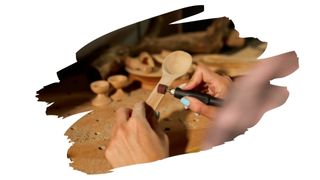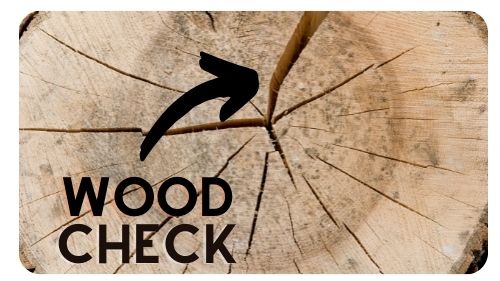The best type of carving wood will depend on your carving style. Some wood types are much too soft for shaping with any kind of powered tool. They would splinter and split due to the force of it.
While, other types of lumber are so tough, that only high-powered tools like a lathe (or even a chainsaw) can bite into that lumber.
But what about a Dremel? This multipurpose rotary tool can do a lot of things — from routing to engraving wood. But, when it comes to woodcarving, which particular types of timber pair well with a Dremel?
Well, in this post, you will learn what type of wood is best suited for Dremel wood carving. You’ll also learn if it’s worth woodcarving with ‘green’ wood — or whether you should always stick to working with seasoned lumber.
And keep reading to discover why purchasing ‘shop-dry’ lumber can save you months of waiting around.

This post may contain affiliate links to products that we receive a commission for (at no additional cost to you). Learn more here.
What’s The Best Type Of Wood For Carving?
Wood carving styles that use manual hand tools — and require a light touch — pair best with low density timbers.
While power tool carving techniques will need much denser and tougher wood types.
Related Post: 11 Surprisingly Simple Wood Carving Projects for Absolute Beginners
And What Wood Do You Recommend?
If you plan on wood carving with a Dremel, then wood types such as Walnut and Cherry wood are ideal. These solid timbers can handle the added force and pressure of a Dremel.
What’s more, these two timbers are two fairly affordable and accessible too. Plus their grain patterns can make for fantastic looking crafts.
Related Post: How To Silence A Dremel (Explained)
And Is It Better To Carve Green Or Dry Wood With A Dremel?
It’s easier to carve green wood, because green wood has more give to it. But, dry wood is better if you want to avoid your wood craft checking and cracking while you work.

You see, green wood refers to wood that is still ‘fresh’ and has a fair bit of moisture in it.
Freshly logged lumber has a moisture content of around 100% when it is first cut. But over time, through seasoning, that moisture content is brought down to 19% (or even lower).
Now, while wood still has a lot of moisture absorbed in its wood fibers, it is fairly pliable. Even notoriously tough hard woods can be surprisingly easy to carve when they are still green.
But, green wood is fairly unstable. Even wood types known for their stability, are only really stable after they’ve been seasoned.
And Why Does Green Wood Tend To Crack?
Well it’s because as moisture evaporates, wood shrinks. And if that happens fast enough — and a piece you’re carving dries out too quickly — it can become brittle.
You can avoid this fast-drying action, however, by softening wood while you work on it. You can discover more by checking out our post here: How To Soften Wood For Carving (Explained)
Do You Have To Wait For Wood To Dry Before Carving It With A Dremel?
Far from it. You can simply purchase shop-dry wood and carve that instead.
Now, shop-dry wood simply refers to wood that has been sat around in the shop for a while. So, it will have had plenty of time to season and dry. Which means that it should already have a fairly low moisture content when you purchase it.
However, you’ll need to ask your lumber supplier exactly how long that shop-dry wood has been sat around for. But, the longer the better, (within reason).
Nevertheless, if you want to carve a piece of wood you’ve picked up from outside, then be prepared for a long wait. It can take anywhere from 6 to 12 months for that outdoor log to season (depending on the local climate).
If you want to speed up the process of seasoning wood, why not check out a few of our tips in our post: How To Season Wood (7 Tips)
To Wrap Up, Here Are The 3 Key Takeaways From This Post…
- 1). Two of the best types of wood for Dremel woodcarving, are Walnut wood and Cherry wood.
- 2). It is easier to carve into green wood. This is because green wood still has plenty of moisture in it, making it more pliable.
- 3). Nevertheless, while green wood dries out, it is more likely to shift and crack as you work on it.



